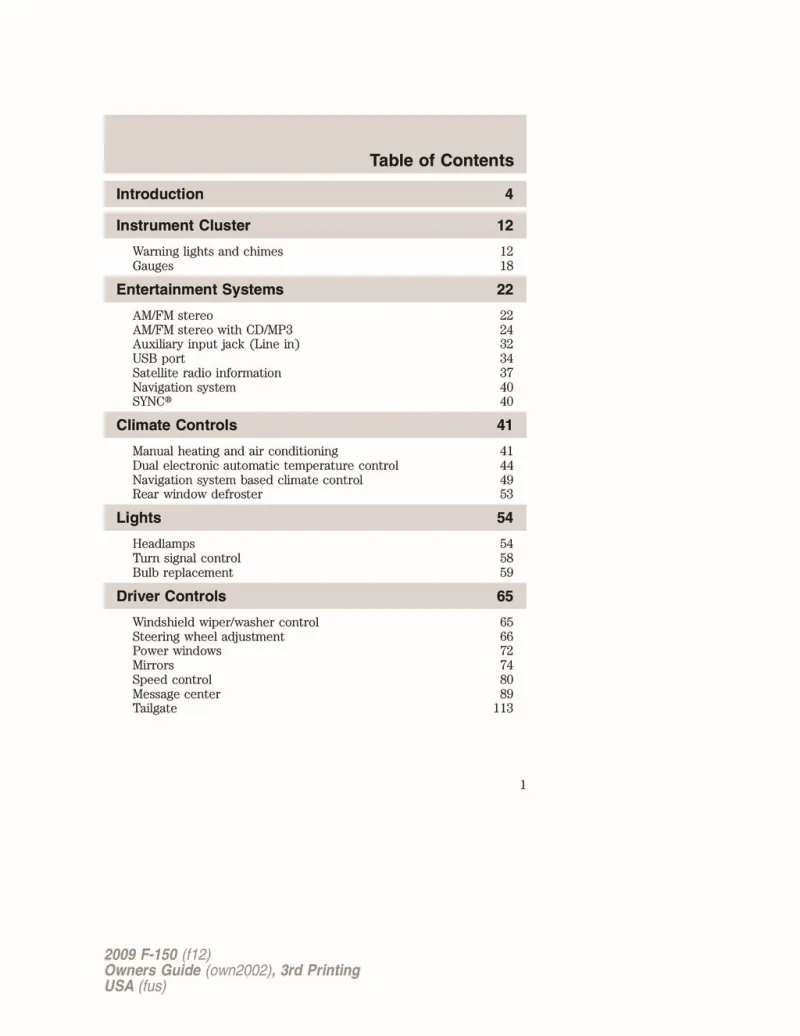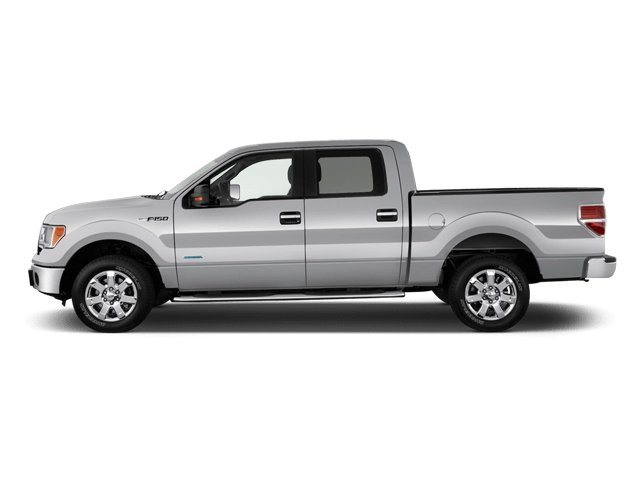2009 Ford F150 Owner's Manual

Table of Contents
2009 Ford F150 Overview
Introduction
The 2009 Ford F-150 remains a pillar in the full-size pickup truck segment, combining rugged capability with impressive versatility. Known for its strong performance and innovative features, the F-150 appeals to both work-oriented users and those seeking a reliable family vehicle. This model year showcases Ford's commitment to delivering robust engineering and comfort, making it a prominent choice for truck enthusiasts and everyday drivers alike.
Powertrains
The 2009 F-150 offers an array of powertrains to suit different needs. The base model features a 4.6-liter V8 engine that generates 248 horsepower, while a more powerful 5.4-liter V8 engine is available, offering 320 horsepower and enhanced towing capacity. A flexible fuel variant allows for the use of E85, promoting efficiency. Additionally, the 2009 F-150 boasts a smooth-shifting six-speed automatic transmission, which ensures optimal performance and fuel economy across various driving conditions.
Trims
This model year showcases a variety of trims, including the XL, STX, XLT, Lariat, FX4, King Ranch, and Platinum. Each trim offers a distinct combination of features and options, allowing buyers to customize their vehicle according to preferences. Standard on most trims are features like air conditioning and an MP3-compatible audio system, while higher trims provide leather upholstery, advanced sound systems, and upgraded technology for a more luxurious experience.
Features
The 2009 Ford F-150 is equipped with multiple features designed for comfort and convenience. Safety is prioritized with advanced airbags, stability control, and anti-lock brakes. For tech enthusiasts, available options include Ford’s SYNC system for hands-free calling and audio streaming. The spacious interior accommodates up to six passengers, driven by thoughtful design and ample storage compartments, making it ideal for family outings or handling work-related tasks.
Owners Manual
The 2009 Ford F-150 owners manual serves as an essential guide for understanding the vehicle's specifications, maintenance requirements, and feature operations. It provides valuable insights into utilizing the full potential of your F-150, ensuring that owners can maximize their truck's performance and longevity while also promoting safe driving practices. From troubleshooting tips to detailed maintenance schedules, the manual is an indispensable companion for any F-150 owner.
User manual download
The Ford F150 owner manual for the 2009 model year is to be found in PDF downloadable format on this page. The owner manual for the model year 2009 is free and in English, but the repair manuals are usually not easy to get and may cost more.
Manual Questions
Fill the form below and someone will help you!

